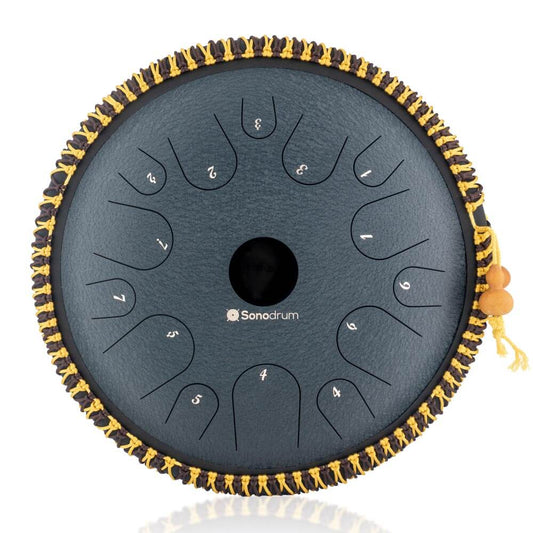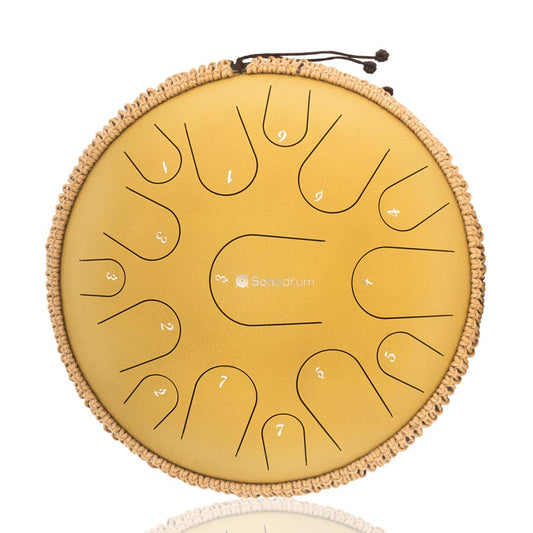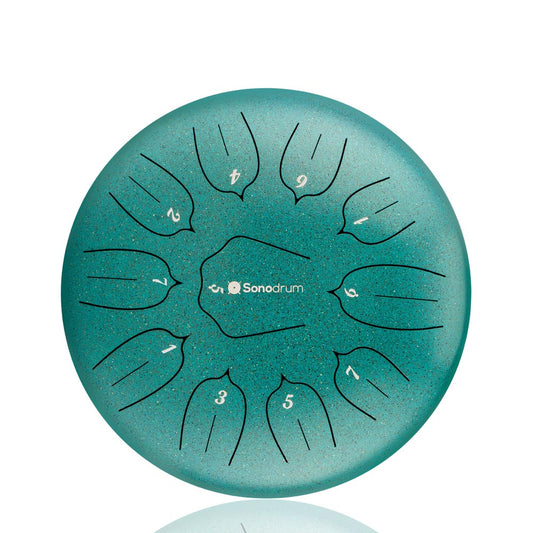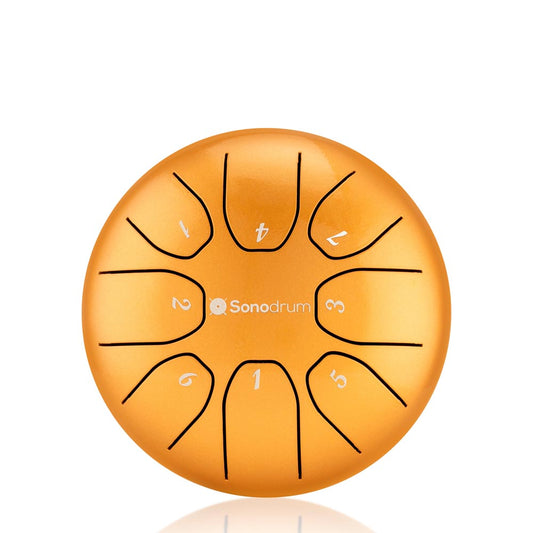In today’s fast-paced world, the concept of Healing Vibrations is gaining significant attention, particularly through instruments like the Sonodrum. This innovative tool has found its way into the realms of music therapy and meditation, showcasing its ability to evoke profound emotional and physical healing. The transformative power of sound and vibrations can enhance relaxation and promote emotional regulation, making therapeutic sound an integral component of modern wellness practices. As we explore the various facets of the Sonodrum, we will delve into its history, scientific backing, and real-life applications, paving the way for a deeper understanding of how this remarkable instrument serves individuals looking for holistic healing.
Key Takeaways
- The Sonodrum is a powerful tool in music therapy and meditation.
- Healing vibrations can enhance emotional well-being and relaxation.
- Sound therapy supports mental and physical health recovery.
- Scientific studies validate the benefits of therapeutic sound.
- Integrating the Sonodrum into practices fosters holistic healing experiences.
Introduction to the Sonodrum
The Sonodrum represents a fascinating development in the world of musical instruments, expertly designed to foster relaxation and well-being. Combining traditional drumming techniques with innovative acoustic technology, this unique percussion instrument produces resonant sounds that facilitate deep relaxation and meditative states. Understanding the Sonodrum offers insight into how sound therapy is utilized within various therapeutic practices.
What is the Sonodrum?
The Sonodrum stands out among musical instruments for its ability to emit rich, soothing tones. Crafted to harness the power of sound, it acts as a pivotal tool in sound therapy, enhancing mental and emotional health. The instrument's design incorporates elements from various cultural drumming practices, integrating modern advancements that amplify its healing capabilities.
The History Behind the Sonodrum
The history of Sonodrum is steeped in rich traditions that reflect its evolution from a simple musical instrument into a healing device. Indigenous cultures have long recognized the therapeutic effects of drumming as a communal and spiritual practice. Over time, the integration of Sonodrum into contemporary sound therapy practices highlights how these ancient methods have been reinterpreted for modern well-being initiatives.
As practitioners embrace the Sonodrum in various therapies, its capacity for enhancing sessions and promoting healing continues to gain recognition. This blend of history and innovation positions the Sonodrum as a vital component of sound therapy today.
Healing Vibrations: The Science Behind Sound Therapy
Understanding the principles of sound therapy science reveals how sound can profoundly influence the human body. Research indicates that sound effects on body functions can elicit positive responses in brainwave activity, promoting relaxation and alleviating anxiety. A growing body of evidence illustrates how vibrational therapy interacts with the nervous system, enhancing overall health and wellbeing.
How Sound Affects the Human Body
Sound therapy works by using specific frequencies to interact with the body’s natural rhythms. This interaction can lower stress levels, improve focus, and facilitate emotional healing. Studies show that sound waves can alter brainwave patterns, helping individuals reach deeper states of relaxation. Many practitioners apply these principles in therapeutic settings, harnessing the power of sound to create a restorative environment.
The Role of Frequencies in Healing
Frequencies play a critical role in the effectiveness of sound therapy. Various healing frequencies have been identified to target specific ailments, enabling practitioners to tailor their approach based on individual needs. For instance, certain frequencies are known to encourage cellular regeneration, while others can aid in pain relief or emotional release. Each vibration has a unique effect, making the study of healing frequencies essential in the field of sound therapy science.
| Frequency (Hz) | Effect | Application |
|---|---|---|
| 396 | Liberation from Fear | Anxiety relief |
| 528 | Transformation and Miracles | Emotional healing |
| 639 | Relationship Repair | Interpersonal harmony |
| 852 | Awakening Intuition | Spiritual awareness |
| 963 | Connection to Cosmic Energy | Higher consciousness |
Through the utilization of these principles, sound therapy continues to demonstrate its potential as a powerful healing modality. Practitioners are tapping into vibrational therapy's benefits, recognizing its capacity to enhance health and overall wellness.
The Benefits of Music Therapy
Music therapy offers a variety of benefits, particularly in enhancing mental health and facilitating physical recovery. The integration of sound and rhythm in therapeutic settings has proven effective in addressing emotional challenges and promoting overall well-being.
Enhancing Mental Health through Music
Engagement with music serves as a potent emotional outlet, allowing individuals to express feelings that might be difficult to articulate verbally. Studies emphasize the significant benefits of music therapy in improving mood and reducing anxiety. Music fosters a sense of connection, providing a supportive community element that many find vital in their healing process. The relationship between mental health and music extends to reducing symptoms of depression, promoting relaxation, and fostering resilience.
Physical Healing and Recovery with Sound
Sound healing for recovery has gained traction in various clinical settings, showing promise in addressing pain management and enhancing physical rehabilitation. Research indicates that specific frequencies can alleviate discomfort and encourage healing in tissues. Music therapy sessions often incorporate this sound healing aspect, leading to considerable improvements in patients’ physical conditions. Organizations such as the American Music Therapy Association support these findings, highlighting the effectiveness of music in therapeutic environments.
Integrating the Sonodrum into Meditation Practices
Incorporating the Sonodrum into meditation practices can enhance the depth of your meditative experience. Effective meditation session preparation plays a crucial role in facilitating a meaningful practice. Below are steps to create an optimal environment and approaches for guided meditation techniques that utilize the soothing rhythms of the Sonodrum.
Preparing for a Sonodrum Meditation Session
Effective meditation session preparation involves several key elements to create an atmosphere conducive to deep relaxation and presence.
- Choose a Quiet Space: Select an area free from distractions. This will help in focusing your mind during the Sonodrum meditation.
- Create a Comfortable Setting: Arrange cushions, blankets, or mats to ensure comfort throughout the session.
- Set Intentions: Reflect on what you wish to achieve during your meditation. Clear intentions can guide the experience.
- Use Soft Lighting: Dim or soft lighting can help create a serene atmosphere that encourages relaxation.
Guided Meditation Techniques Using the Sonodrum
Implementing guided meditation techniques with the Sonodrum can deepen your connection to inner vibrations.
- Sound Focus: Start by listening intently to the Sonodrum's sounds, letting them fill your mind and body.
- Breathing Rhythms: Synchronize your breath with the rhythm of the Sonodrum, fostering a sense of unity with the sound.
- Chakra Alignment: As the sounds resonate, visualize energy movement through your chakras, enhancing spiritual awareness.
- Mindfulness Practice: Let thoughts come and go while focusing on the soothing sounds of the Sonodrum, promoting a state of mindfulness.
Real-Life Applications of the Sonodrum in Therapy
The integration of Sonodrum therapy applications into various therapeutic settings has generated notable interest among professionals in the field. These applications showcase how effectively the Sonodrum can enhance the therapeutic experience for individuals and groups alike. Numerous therapist success stories illustrate the profound impact this innovative tool has on mental and physical wellness.
Success Stories from Therapists
Many therapists report remarkable transformations in their clients due to the incorporation of the Sonodrum in their practices. For instance, a well-known therapy center in California documented several therapist success stories where patients experiencing anxiety and depression reported significant improvements after participating in Sonodrum sessions. Feedback highlighted a sense of calm and increased emotional resilience, which further reinforced the efficacy of sound therapy.
Incorporating Sonodrum in Group Sessions
The unique qualities of the Sonodrum shine in group therapy with Sonodrum as participants engage collectively in a shared sound experience. This format fosters a sense of community and connection among group members, encouraging open communication and emotional support. In one specific instance, a group of veterans benefited immensely from weekly sessions. Participants expressed that the communal nature of these sessions allowed them to bond over shared experiences while promoting healing through sound. Ultimately, group therapy with Sonodrum enriches the therapeutic process, enabling individuals to cultivate trust and understanding within a safe environment.
Conclusion
As we wrap up our exploration of the Sonodrum, it’s clear that the healing vibrations produced by this unique instrument play a pivotal role in both music therapy and meditation. From its historical significance to its scientific backing, the Sonodrum offers a profound approach to enhancing health and wellness. The benefits of sound therapy have been reflected in various applications, providing support for individuals in their journey toward emotional and physical recovery.
The music therapy recap we presented highlights not only personal anecdotes from therapists but also the powerful connections formed within group sessions. The ability of the Sonodrum to create a communal experience amplifies its healing effects, making it a valuable tool for those seeking relief from stress or trauma. Such vibrational interactions foster an environment conducive to healing and self-discovery.
In light of all these factors, it’s encouraging to consider how the Sonodrum and sound therapy can transform lives. Whether incorporated into a personal practice or utilized in a therapeutic setting, its benefits are undeniable. As we move forward, let us remain open to the possibilities that healing vibrations present in our wellness journeys, knowing that sound can truly be a profound ally in our quest for balance and restoration.
FAQ
What is a Sonodrum and how does it work?
The Sonodrum is a unique percussion instrument designed to create resonant sounds that facilitate deep relaxation and meditative states. It works by producing vibrations at various frequencies, which can help to calm the mind and promote emotional healing.
How can the Sonodrum enhance meditation practices?
The Sonodrum can significantly enhance meditation by creating a soothing sound environment that supports mindfulness. Its rhythmic patterns encourage deeper breathing and focus, allowing individuals to connect with their inner selves and promote relaxation.
Are there any scientific studies that support the benefits of sound therapy?
Yes, numerous studies highlight the benefits of sound therapy on mental and physical health. Research indicates that sound waves can positively affect brainwaves, reduce anxiety, and promote relaxation, making it a valuable tool in therapy and wellness practices.
How does music therapy improve mental health?
Music therapy serves as an emotional outlet, helping individuals manage stress and express feelings. It can alleviate symptoms of anxiety and depression, contributing to overall mental well-being.
Can the Sonodrum be used in group therapy sessions?
Absolutely! The Sonodrum is effective in group therapy settings, as communal sound experiences foster connections among participants and enhance the therapeutic process, providing a supportive and collaborative environment.
What are some preparation steps for a Sonodrum meditation session?
To prepare for a Sonodrum meditation session, create a calming environment, minimize distractions, and set clear intentions. This helps to cultivate a focused mindset conducive to deeper meditation.
How can I find qualified therapists using the Sonodrum?
Look for certified music therapists or wellness practitioners in your area who specialize in sound therapy. Professional organizations often provide directories of qualified therapists that use the Sonodrum and other sound healing techniques.




